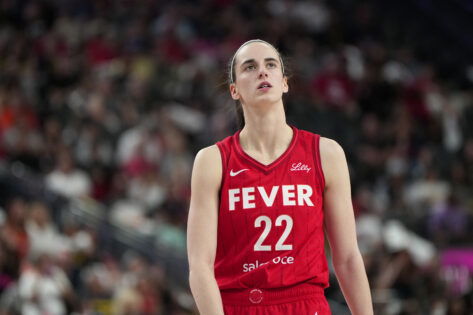

Caitlin Clark's arrival in the WNBA has undeniably ignited a storm of attention, both positive and negative, and much of it is centered around the perceived lack of protection she receives on the court and the growing threat her presence poses to the established order. The Indiana Fever's rookie sensation has become a lightning rod for controversy, with fans and analysts alike questioning whether she's being unfairly targeted and whether the league is doing enough to protect its rising star.
A recent game between the Indiana Fever and the Connecticut Sun underscored these concerns. During the game, Clark was poked in the eye by Sun guard Jacy Sheldon, and later, Marina Mabrey shoved Clark to the ground, leading to heated exchanges and increased scrutiny of the Fever's response. Fans quickly criticized the Fever organization and players for not adequately protecting Clark from what they perceived as overly physical play. Some have even suggested the team needs an "enforcer" to deter opponents from taking liberties with their star player. The incident sparked widespread debate, with many drawing comparisons to the NBA, where teams are known to fiercely protect their marquee players.
Sophie Cunningham, Clark's teammate, was ejected from the game after a late foul on Sheldon, which many interpreted as an act of retaliation for the earlier incident involving Clark. Cunningham has since publicly criticized WNBA officiating, suggesting that the referees' failure to protect Clark has led to escalating tensions. "It was a buildup for a couple of years now of them just not protecting the star player of the WNBA," Cunningham stated, emphasizing her commitment to protecting her teammates.
The WNBA fined Cunningham and issued technical fouls to Clark and Tina Charles after reviewing the game. Many see this as a contentious response that doesn't solve the underlying issues.
The controversy extends beyond individual games and incidents. Some argue that Clark's popularity and the attention she brings to the WNBA have created a sense of resentment among some players and fans. There's a perception that some veterans feel threatened by Clark's immediate impact and the shift in focus towards the Fever. This tension, coupled with the increased physicality Clark faces on the court, has created a pressure cooker environment that threatens to overshadow the game itself.
The WNBA faces a delicate balancing act. On one hand, the league needs to protect its players and ensure a fair and safe playing environment. On the other hand, it must avoid the appearance of favoritism or preferential treatment towards Clark. The challenge lies in finding a way to address the concerns about player safety without stifling the competitive spirit of the game or alienating other players and fans.
Ultimately, the outrage surrounding Caitlin Clark and the Indiana Fever highlights the complex dynamics at play within the WNBA. It's a story that encompasses issues of player safety, competitive balance, and the challenges of integrating a generational talent into an established league. How the WNBA navigates these challenges will not only determine Caitlin Clark's future but also shape the future of the league itself.